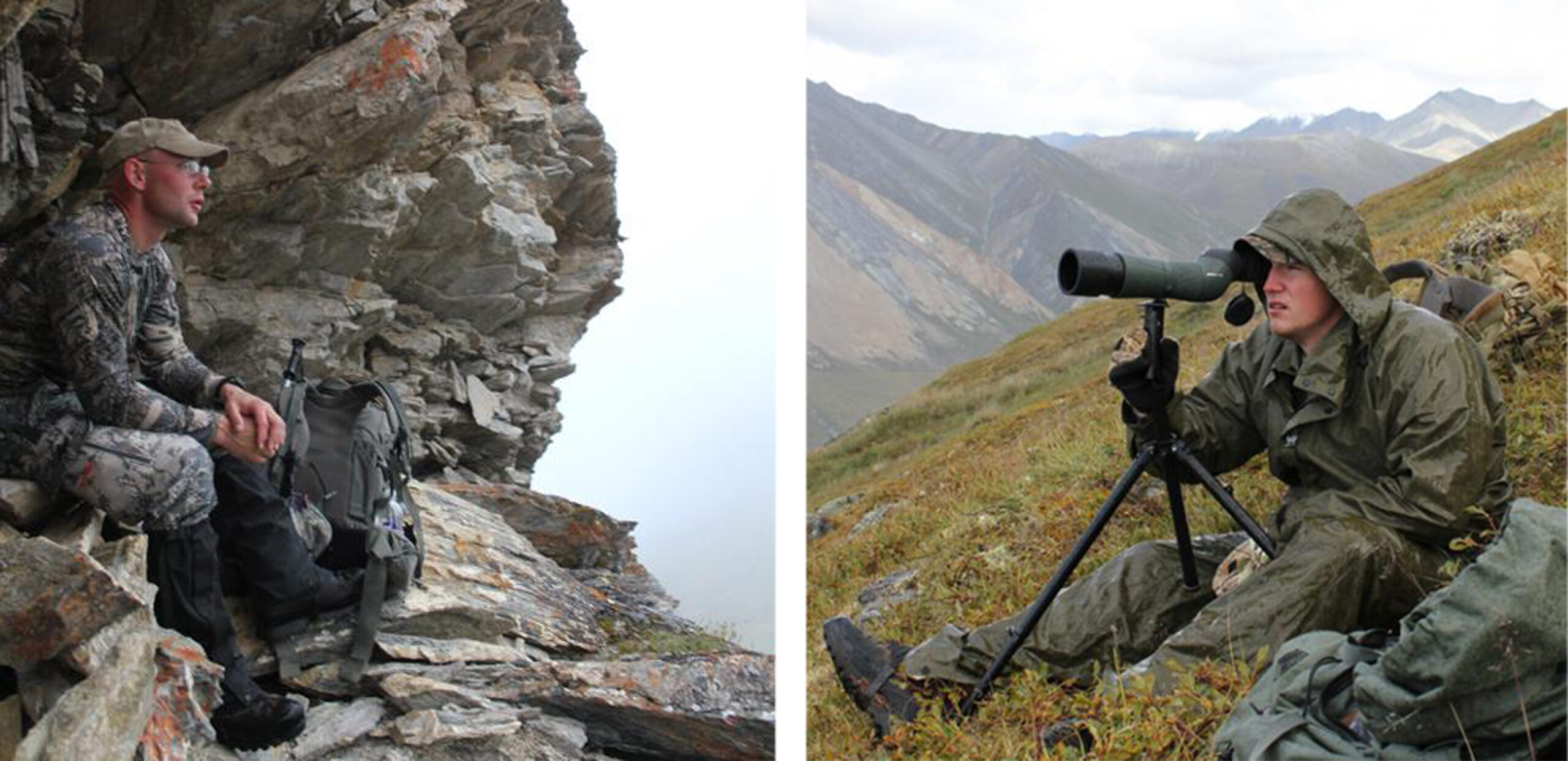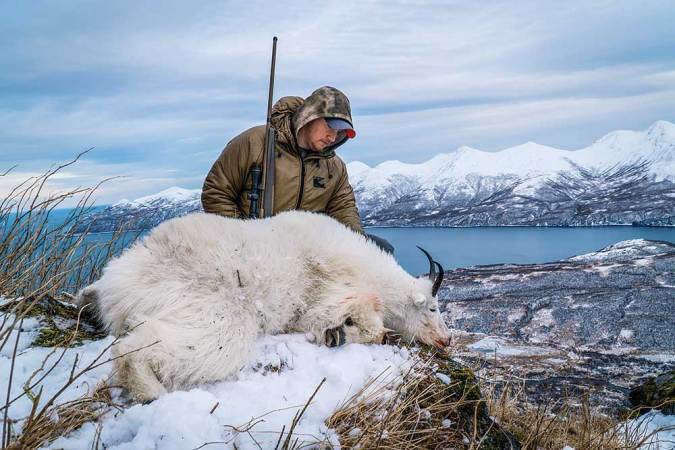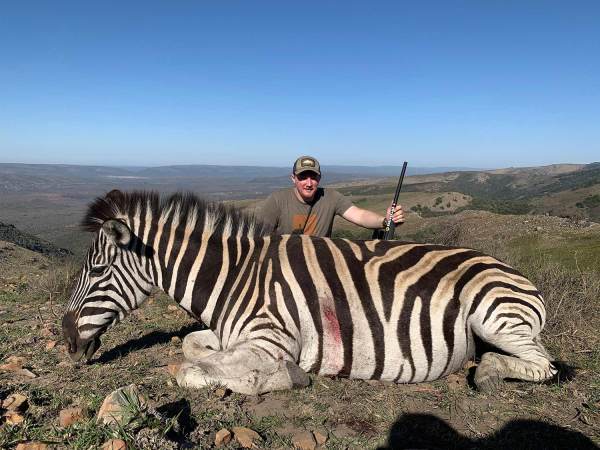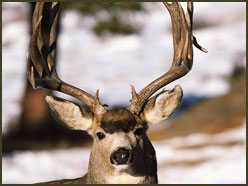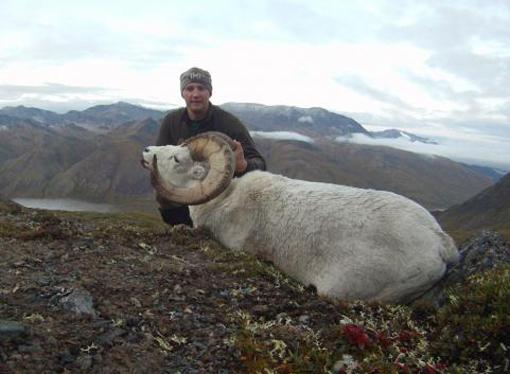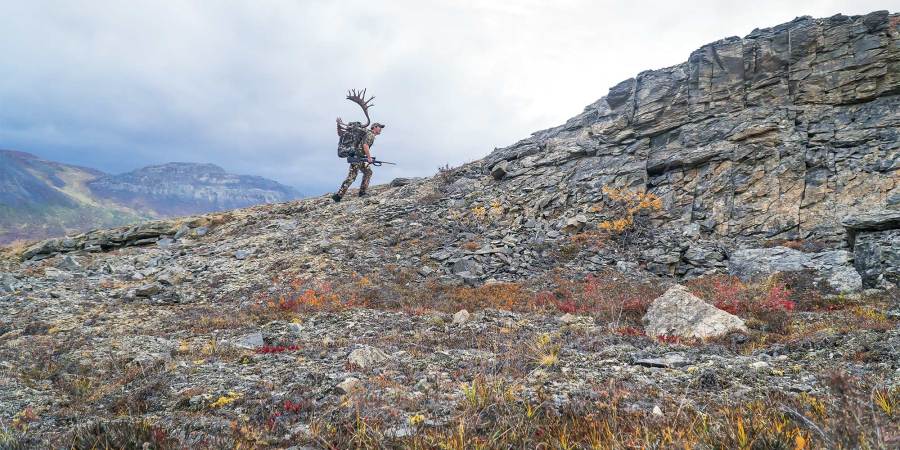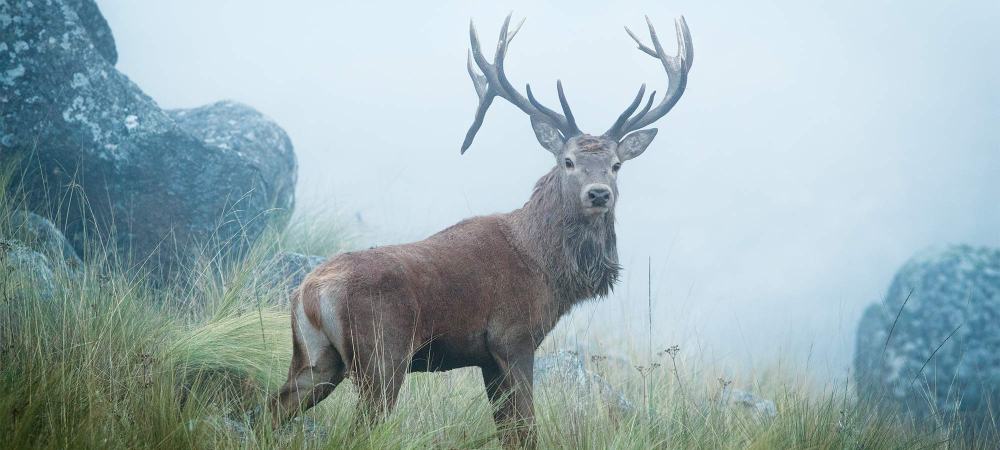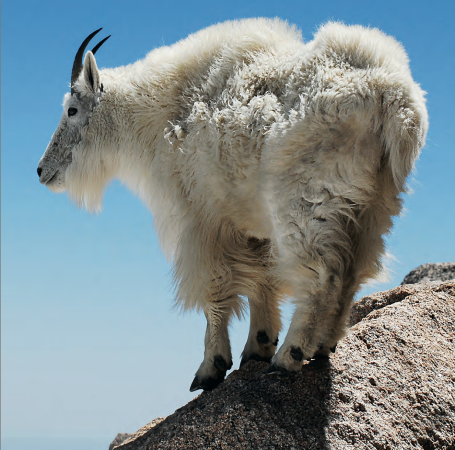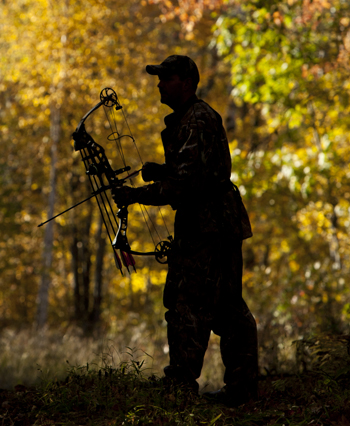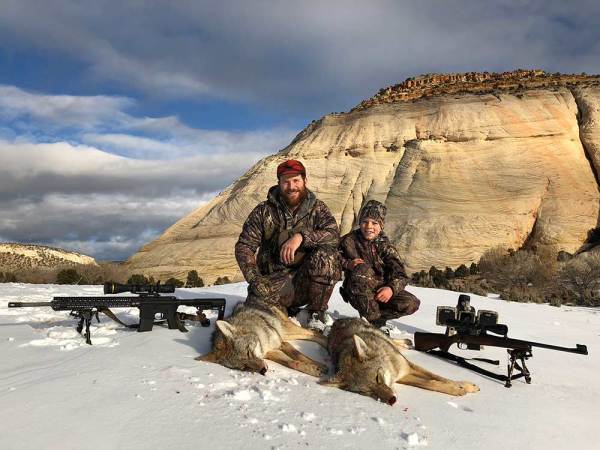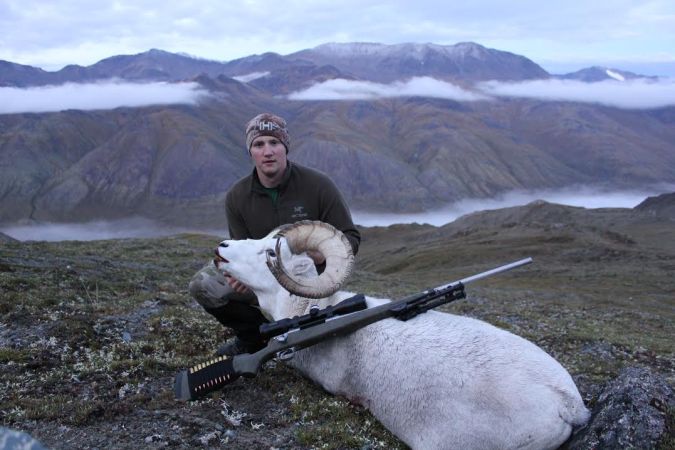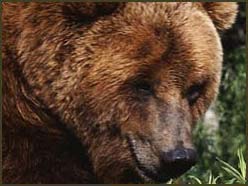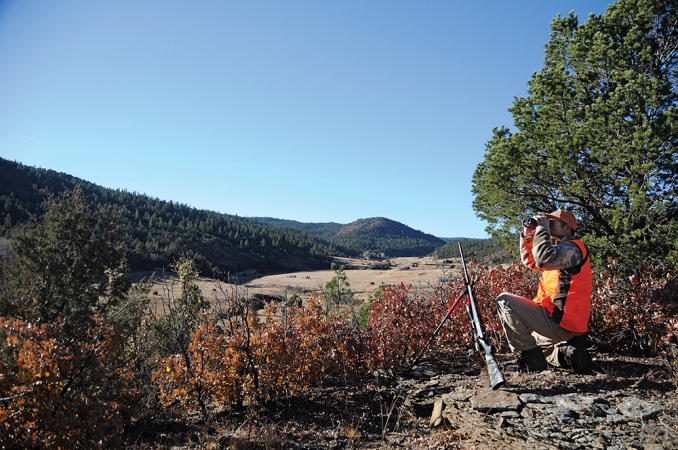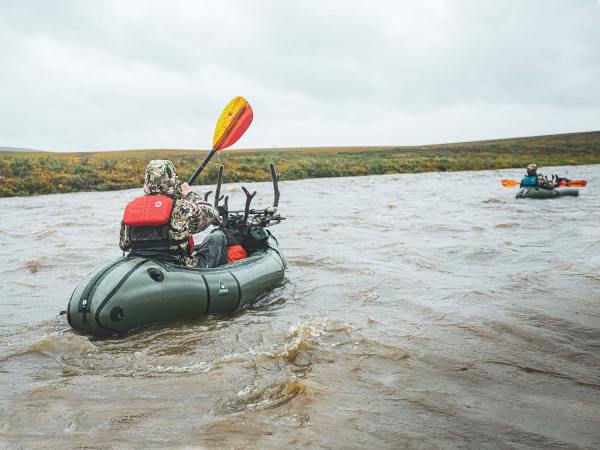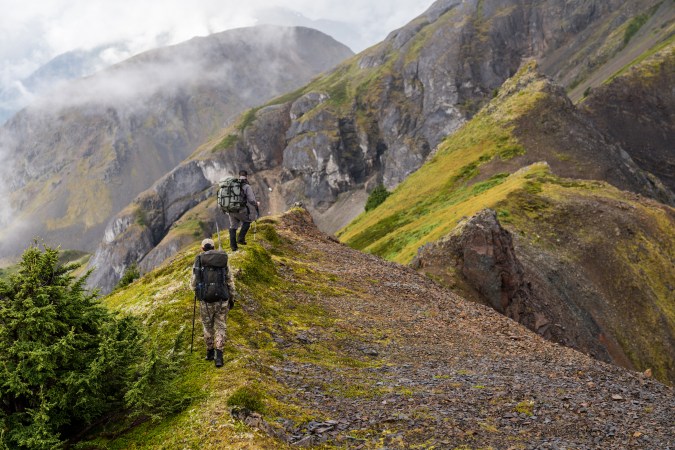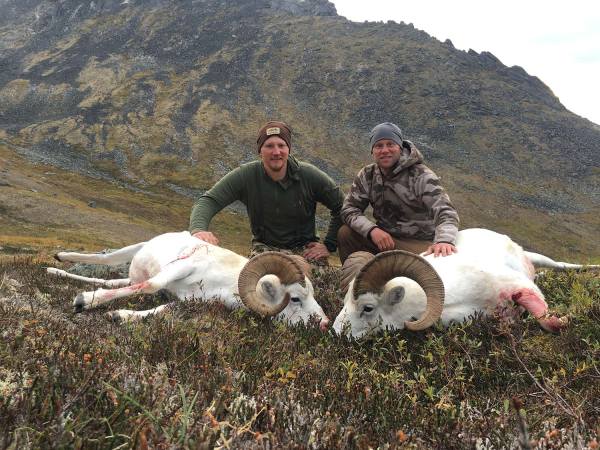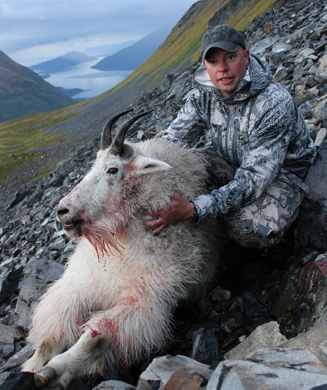Don’t let the title fool you, there’s nothing creepy about doing the creep and peek when you’re hunting mountain game. Taking to the mountains in pursuit of the animals that call it home automatically puts you at a disadvantage. Trekking into the far reaches of the mountains, into the high valleys and basins that mature animals find refuge in can be very rewarding, but those animals are there for a reason and know how to spot danger. Although my experience is with Dall sheep and mountain goats, the same applies for high country mule deer and other animals that call these high havens home.
The biggest key for spotting, evaluating, and stalking mountain game is staying out of sight. Many of these areas are void of trees and vegetation cover, so you have to rely on the topography to conceal yourself. Probably the two biggest screw-ups hunters make that get them busted are skylining and moving in the open.
For those not familiar with the term, skylining is putting yourself in a position (on top of a ridge for example) where there is nothing behind you except the sky, or the terrain behind you is such that you are easily spotted on top of the ridge or hill you are on. Moving in the open is a little more straight forward and understandable. The bad news is that you are guaranteed to have to move in the open, and go over the tops of hills and ridges. The good news is that if you’re careful, you don’t have to worry about it.
The creep and peek principal is simple. When you are hiking or stalking anywhere where your target animals (or animals that might tip them off) could be, move very carefully. As you move, new terrain is almost constantly becoming visible. I don’t worry about this as much when I’m miles from where I’m going to be hunting, but when I’m on the prowl, I carefully examine new terrain as it reveals itself.
Whether you are coming up over a ridge top or around the mouth of a draw or valley, move only a few steps at a time, exposing small slivers of the now-visible terrain to your view. Glass them very carefully. If nothing is there, move a little farther and keep glassing. If you’re careful, you will usually spot the hind end, back, horns, or other parts of the animal before you are exposed enough for them to spot you. Trust me, often if you go a few steps too far, they will see you before you see them.
In addition to taking it slow, if you have to cross a ridge top or open area, try to find some kind of cover or backdrop behind you to help conceal your movement. Rock piles usually provide enough cover to break up your outline as you creep forward. Also, be aware of the position of the sun. It can work great to have the sun directly at your back, and even better if you can get over the edge of the ridge into the shadows just below the sun (from the animal’s perspective). Do be careful though, as a high sun behind you can cast long shadows down steep ridges that the animals will spot moving before they actually see you. If you get this down, it will greatly increase your ability to stay undetected in the wide open alpine.

